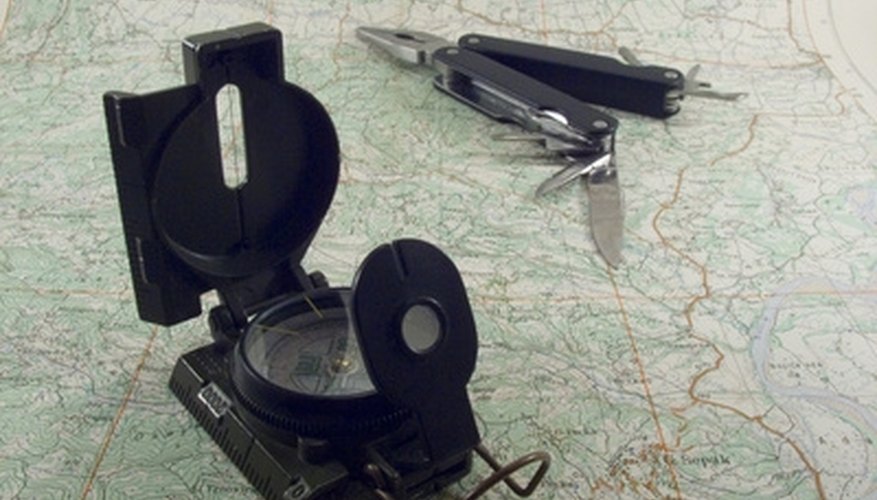
Compasses are a navigational tool in many different walks of life. From casual countryside trekkers to massive ocean liners, the compass helps all manner of people and objects reach their final destination.
Baseplate Compass
The baseplate compass is one of the most common and affordable types of compass. The liquid-filled compass mounts on a rectangular base made of clear plastic. The baseplate often includes a magnifying lens for map reading, luminous components for low-light conditions and different scales for worldwide use. The baseplate compass is good for plotting purposes, but the lack of advanced sighting features makes it difficult to sight on a distant object.
Card Compass
The card compass, or marine compass, commonly used on ships and boats, differs from most other compasses because it uses a fixed needle, relying on a moving compass card for directional readings. Because the moving card absorbs much of the motion of a boat, it is easier to read than a needle compass, says the Map World website.
Thumb Compass
Competitors in various orienteering sports often use thumb compasses, also known as competition compasses. The compass attaches to the user's thumb, allowing the competitor to hold both map and compass in one hand while travelling at speed, be it on foot, by bike or by canoe.
Lensatic Compass
The lensatic compass features three main parts. The base forms the body of the compass and holds the needle, dial and rotating scales. The cover contains the sighting wire, and serves to protect the compass when closed. The rear lens flips out when the compass is open, and is used to read the dial. The U.S. military often uses lensatic compasses, which are designed for strength.
Prismatic Compass
The prismatic compass is a sophisticated device designed for highly accurate navigation. The prism sighting arrangement allows the user to read the compass bearings while sighting distant objects.
Gyrocompass
According to the Navis website, a gyrocompass harnesses the force of gravity to a gyrowheel so that the axis of the wheel will always seek the north-to-south line. This sophisticated compass always finds true north, rather than magnetic north. It is also unaffected by external magnetic fields, unlike magnetic compasses. Most large sea-going vessels use a gyrocompass as part of their navigation system.
Electronic Compass
Electronic compasses provide bearings on a numerical readout. They give quite accurate readings and include a number of special features, including the option to store bearings in the memory and the ability to notify the user if he wanders off course. However, electronic compasses are not ideal for map work. They also require a power source, making reliability an issue.
References
Writer Bio
Anthony Grahame has been a writer for more than 15 years. He began writing professionally online in 2008. He has a degree in English literature from the University of Sussex and is an experienced traveler and travel writer. His work has been published on a variety of well respected websites including "Living in Peru".



